QuestionThe tank is 30 gallon and has been set up for a week. The pH level is not checked. All the fish are doing fine exept for my Swordie. I have one male betta. Three Bala Sharks, four Neon Tetras, had five Ghost Shrimp and a Catfish. My Swordie just darts to the top of the tank and then falls back down after getting some oxygen. What is wrong with it and what can I do to fix it? Where can i get the stuff to test the pH and ammonia levels?
AnswerHi Roma;
Your poor swordtail is suffering from toxins that have built up in the water. This is from "New Tank Syndrome" and having too many fish in there too soon. It takes 6 to 8 weeks for a new tank to "balance" so the toxins go away. Make a 25% water change every day for the next 3 days to lower the toxins enough that the fish can handle it. Remember to use a water conditioner when you put the new water in. Also be sure that the new water is the same temperature as the old to prevent shock. I will include my article about new tanks at the end of this letter so you know what to expect next.
You should be able to get test kits at your local fish store or if you don't have one, shop online. I don't even use them anymore. Just make a water change of 25% every week, vacuum the gravel, and don't overfeed or overcrowd the tank. It takes care of itself if you do that and you don't really need to know what the levels are if everyone looks healthy and the gravel isn't full of crud.
You should know that your bala sharks will get too big for your tank. They are fairly slow growers but still need lots of room because they are nervous fish. They get to be 12 inches long. They may also pick on your betta as they get bigger. Since they need a 100 gallon tank or larger, they are better off going back to the store. They will become very unhappy in the next few months if you keep them. Poor guys.
Here is my article on new tanks to help you know what to do next;
**********
New Tank Syndrome or Break-in Period
So you have a new tank and you filled it up, put the filter together, mounted the heater into place and turned on the lights. You have all the plants and decorations where you want them....
You are ready for fish.
But, your filter is not ready for a full tank of fish yet.
The filter is running and moving the water and cleaning out crud, right? Of course!
But a very important part of your filter is the part you can't see. An aquarium filter removes the larger visible stuff, but it also must remove the dissolved fish waste that turns into ammonia in the water. To do this, special bacteria must grow in the filter system and on the particles of gravel in the bottom of your tank. This process occurs even on a limited scale in little fish bowls that have no filter in them.
This is "New-Tank Syndrome" or the "Break-in Period". The entire process takes 6 to 8 weeks to complete because these "nitrifying" bacteria grow quite slowly.
Start off with only one or two hardy fish (no more than 2 total inches of fish) for every ten gallons of water and don't add more until the 6 to 8 weeks has gone by. Hard to be patient, but it is worth it to keep your fish alive and healthy. As a matter of fact, the bacteria cannot develop without fish in the tank. You can let that tank sit forever without fish in it, but as soon as the first fish goes in the process begins. Avoid changing the filter pads during break-in. This removes the bacterial colonies that are essential to a balanced aquarium. You can rinse the filter pad out in a container of aquarium water. This will preserve most of the bacteria colonies while still allowing your filter to flow freely. Even using bacteria additives and water conditioners when you first set up the tank will not make a tank begin the cycle by itself. If there are no fish to provide food (fish waste) for the bacteria, the beneficial bacteria cultures will die and you will have to start the colonies all over again once fish are added to the tank. Once the tank has completed the initial cycle, you can change the filter pads every 4 weeks or so. But for now, just rinse them.
Feed your new fish VERY lightly. Any excess food will cause additional waste your system cannot afford to have right now. If you see food floating around or lying on the plants and gravel after five minutes, too much food is going into the tank. Cut back a little each time you feed until it is ALL gone 5 minutes after you feed them. Feed them once a day.
During this "break-in period" your tank will become cloudy and milky looking. You may have to tolerate this for the entire break-in period but it is only temporary. Changing 25% of the water three times a week until the break-in period is over helps a great deal. Changing water reduces the ammonia and nitrites that rise while the bacteria continues to multiply. If ammonia and/or nitrites become too high, your fish will become stressed and possibly die. Use a good water conditioner when you replace the water and make sure it is the right temperature to avoid shocking your fish.
When the break-in is over after 6 to 8 weeks and there are no nitrites or ammonia present in the water you can slowly add more fish. Add one or two every week until you reach the desired population. This allows the bacteria to adjust to the new population every time before adding more. Monitor the nitrites and ammonia to be sure they don't come up. If they do, make a 25% water change and check them again. Don't add the next fish until the levels are down again.
The safe maximum population for any size tank is one inch of adult fish for every gallon of water in the tank. Do some research to be sure of the fish you are interested in. Even though they are small when you buy them, you have to base your population calculations on full-sized adult fish. Many hobbyists have up to two inches per gallon but this can be risky. If a water quality issue arises or a disease occurs it will spread fast and furious in an over-populated tank. In any case, 25% water changes every week to two weeks are absolutely essential for the health of your fish.
Following these guidelines will help you get your new tank on the right track.
**********
At Your Service;
Chris Robbins
Come on over and join us on the freshwater fish forum at About.com to get even more information too;
http://freshaquarium.about.com/od/questionsanswers/a/naavigateforum.htm

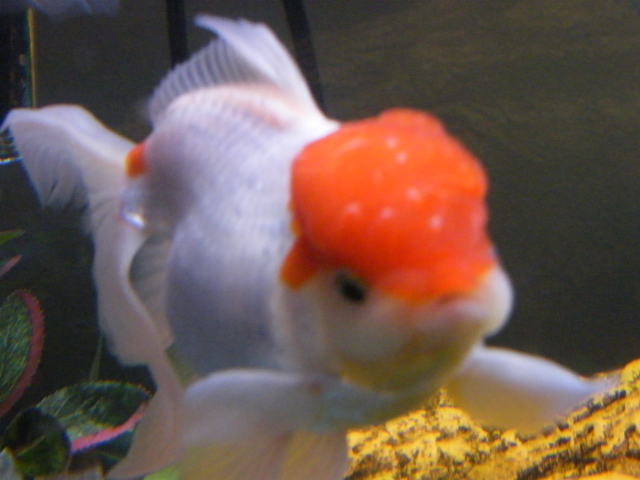 Fancy Goldfish problem
QuestionGoldfish with white fl
QUESTION: First,
Fancy Goldfish problem
QuestionGoldfish with white fl
QUESTION: First,
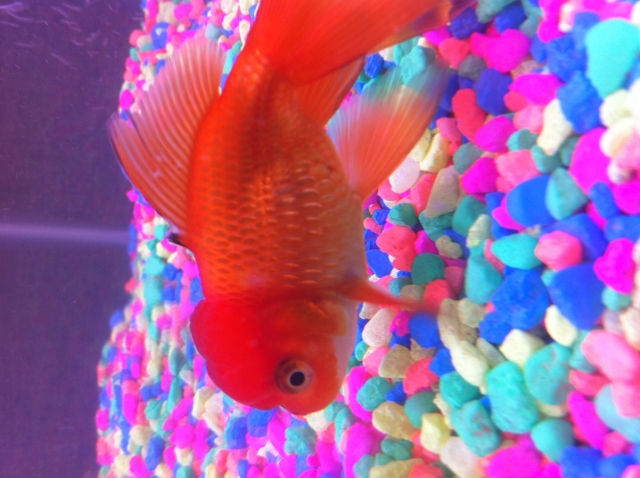 Something wrong with my red cap oranda and dont know whats causing it
QuestionQUESTION: Hi,
I have a two inch or
Something wrong with my red cap oranda and dont know whats causing it
QuestionQUESTION: Hi,
I have a two inch or
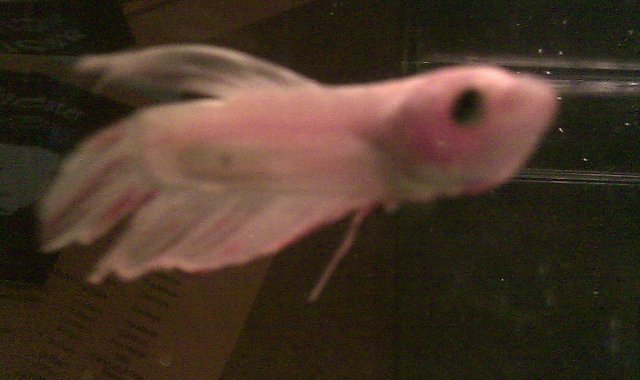 Eye Cloud?
QuestionBenny
QUESTION: Dear Jaymie,
As I have
Eye Cloud?
QuestionBenny
QUESTION: Dear Jaymie,
As I have
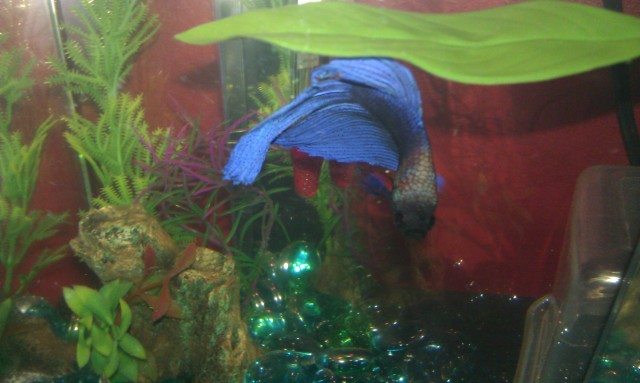 Sick Betta?
QuestionQUESTION: Ive had my Betta for close to 3 month
Sick Betta?
QuestionQUESTION: Ive had my Betta for close to 3 month
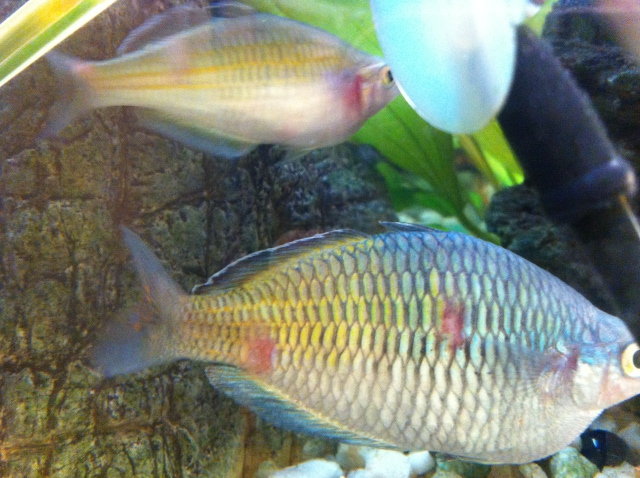 Columnaris/Costia?
QuestionBosmani with bumps
Scales missing
Columnaris/Costia?
QuestionBosmani with bumps
Scales missing